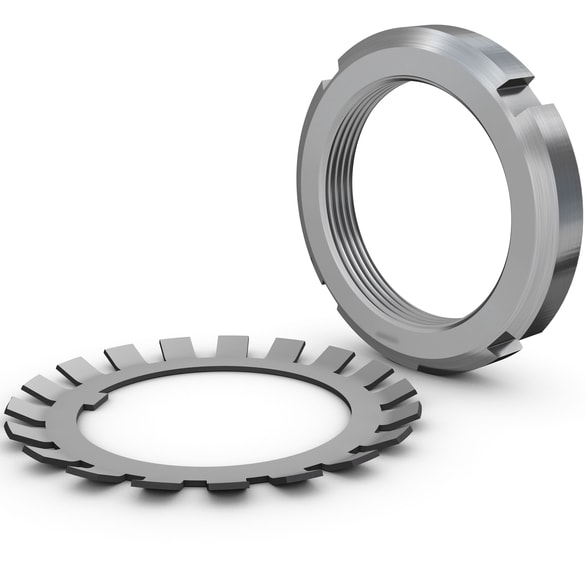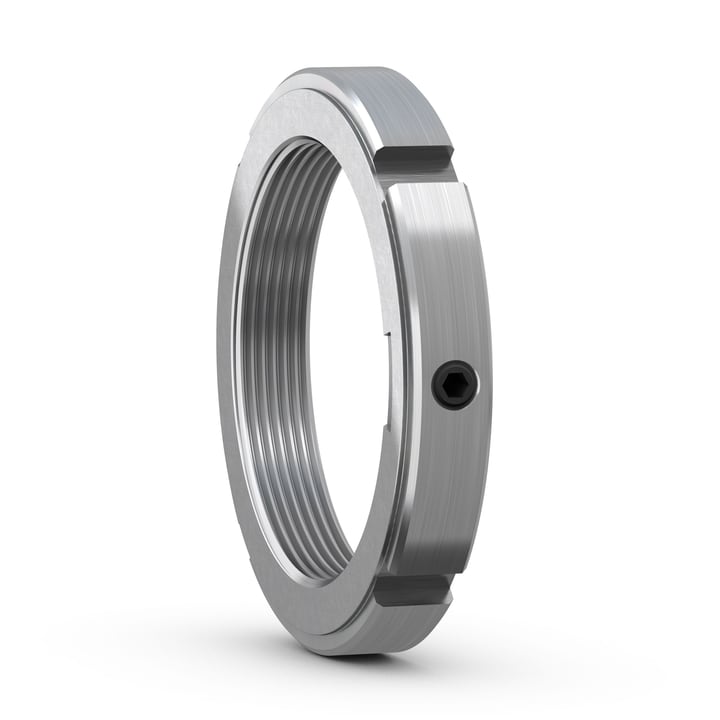Lock nuts
Lock nuts are used to locate bearings onto a shaft. Additionally, they can be used to mount bearings with a tapered bore onto tapered shaft seats and adapter sleeves, and to dismount bearings from withdrawal sleeves. Lock nuts are also frequently used to secure gears, belt pulleys and other machine components.
Lock nuts have to be secured to prevent unintentional loosening by:
- A locking device that engages a keyway in the shaft or key slot in the adapter sleeve,
- Or a locking mechanism integrated in the nut.
SKF lock nuts provide a variety of ways to secure the nut onto a shaft. The lock nuts listed here constitute the basic assortment. Lock nuts with other locking methods can be supplied on request.
Industrial lock nuts (table 1)
- Requiring a keyway
- With integral locking
Precision lock nuts (table 2)
- With integral locking
Lock nuts with integral locking reduce the cost of the shaft as no keyway is required. Installation is quicker and easier because no separate locking device is necessary. However, the loosening torque of these lock nuts requires more attention. For information on loosening torque, refer to the product data sections for the various lock nut series.


Lock nuts requiring a keyway
- KM, KML, HM .. T metric lock nuts retained with a lock washer
- HM(E) metric lock nuts retained with a locking clip
- N and AN inch design lock nuts retained with lock washers
- N inch lock nuts retained with a locking plate
Product details

Lock nuts with integral locking
- KMFE metric lock nuts with a locking screw
- KMK metric lock nuts with an integral locking device
Lock nuts with integral locking reduce the cost of the shaft as no keyway is required. Installation is quicker and easier because no separate locking device is necessary. However, the loosening torque of these lock nuts requires more attention. For information on loosening torque, refer to the product data sections for the various lock nut series.
Product details
